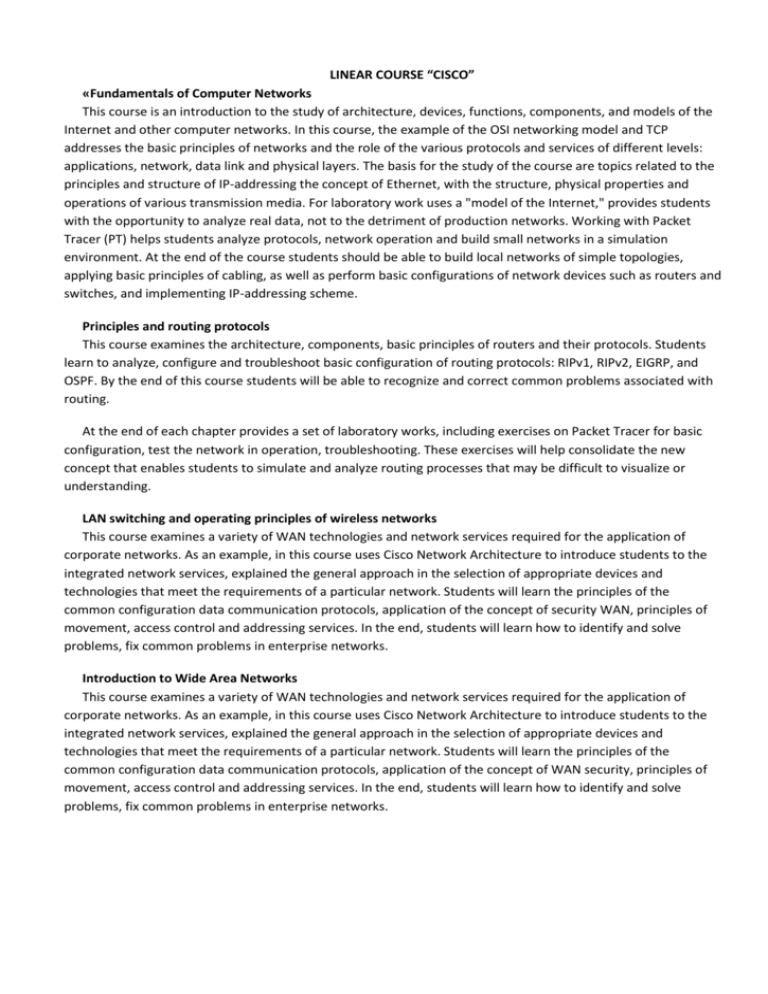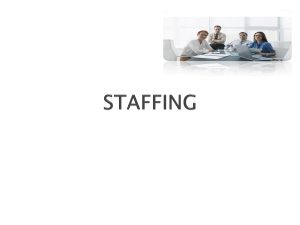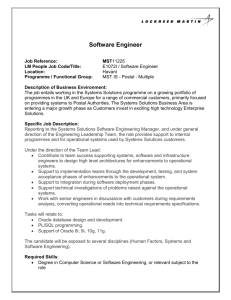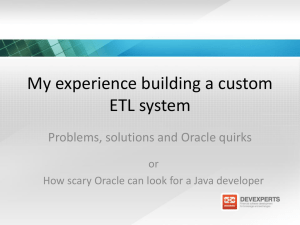Catalog of elective courses
advertisement

LINEAR COURSE “CISCO” «Fundamentals of Computer Networks This course is an introduction to the study of architecture, devices, functions, components, and models of the Internet and other computer networks. In this course, the example of the OSI networking model and TCP addresses the basic principles of networks and the role of the various protocols and services of different levels: applications, network, data link and physical layers. The basis for the study of the course are topics related to the principles and structure of IP-addressing the concept of Ethernet, with the structure, physical properties and operations of various transmission media. For laboratory work uses a "model of the Internet," provides students with the opportunity to analyze real data, not to the detriment of production networks. Working with Packet Tracer (PT) helps students analyze protocols, network operation and build small networks in a simulation environment. At the end of the course students should be able to build local networks of simple topologies, applying basic principles of cabling, as well as perform basic configurations of network devices such as routers and switches, and implementing IP-addressing scheme. Principles and routing protocols This course examines the architecture, components, basic principles of routers and their protocols. Students learn to analyze, configure and troubleshoot basic configuration of routing protocols: RIPv1, RIPv2, EIGRP, and OSPF. By the end of this course students will be able to recognize and correct common problems associated with routing. At the end of each chapter provides a set of laboratory works, including exercises on Packet Tracer for basic configuration, test the network in operation, troubleshooting. These exercises will help consolidate the new concept that enables students to simulate and analyze routing processes that may be difficult to visualize or understanding. LAN switching and operating principles of wireless networks This course examines a variety of WAN technologies and network services required for the application of corporate networks. As an example, in this course uses Cisco Network Architecture to introduce students to the integrated network services, explained the general approach in the selection of appropriate devices and technologies that meet the requirements of a particular network. Students will learn the principles of the common configuration data communication protocols, application of the concept of security WAN, principles of movement, access control and addressing services. In the end, students will learn how to identify and solve problems, fix common problems in enterprise networks. Introduction to Wide Area Networks This course examines a variety of WAN technologies and network services required for the application of corporate networks. As an example, in this course uses Cisco Network Architecture to introduce students to the integrated network services, explained the general approach in the selection of appropriate devices and technologies that meet the requirements of a particular network. Students will learn the principles of the common configuration data communication protocols, application of the concept of WAN security, principles of movement, access control and addressing services. In the end, students will learn how to identify and solve problems, fix common problems in enterprise networks. LINEAR COURSE “MICROSOFT ADMINISTRATION” Windows Server 2008 Setup and Use Active Directory After studying the course, students will have the following skills and knowledge: 1. Configuring Domain Name System (DNS) for Active Directory 2. Configuring the Active Directory infrastructure 3. Role Configuring Active Directory and Services 4. Creating and maintaining Active Directory objects 5. Maintaining the Active Directory environment 6. Configuring Certificate Services in Active Directory. Windows Server 2008 network Setup After studying the course, students will have the following skills and knowledge: 1. Configuring Addressing and Services 2. Configure the translation of names into IP address 3. Configure the network access 4. Configuring file services and print services 5. Monitoring and Control Network Windows Server 2008 Configuring Applications After studying the course, students will have the following skills and knowledge: 1. Deploy Servers 2. Configure Services for Remote Desktop 3. Configure the Web services infrastructure 4. Configure the network services. LINEAR COURSE “MICROSOFT PROGRAMMING” Microsoft NET Framework – Application Development Platform .NET After studying the course, students will have the following skills and knowledge: 1 - Developing applications that use system types and collections. 2 - Implementing service processes, threading, and application domains in a .NET Framework application. 3 - attachment configuration, diagnostics, and control installation. NET Framework application. 4 - Implementing serialization functionality and I / O in the .NET Framework applications. 5 - Improving security of .NET Framework applications using NET Framework security features. 6 - Implementing interoperability, reflection, and mailing functionality NET Framework application. 7 - Implementing globalization, drawing, and text manipulation functionality in NET Framework application. Microsoft .NET Framework 3.5, Developing applications on the basis of ASP.NET After studying the course, students will have the following skills and knowledge: 1 - Development of web applications. 2 - Working with Data and Services. 3 - Working with ASP.NET AJAX and ClientSide Scripting. 4 - Creating Server Controls. 5 - Configuring and deploying web applications. 6 -Ustranenie troubleshooting and debugging web applications. 7 - Development of web application for mobile devices. Microsoft .NET Framework 3.5 – Application Development After studying the course, students will have the following skills and knowledge: 1 - Creating a UI for a Windows Forms application by using standard development tools. 2 - Integrating data into applications Windows Forms. 3 - Implementation of printing and reporting functionality in applications Windows Forms. 4 - Improving accessibility for the user. 5 - The use of asynchronous programming. 6 - Deploy controls Windows Forms. 7 - Configuring and Deploying Applications. Microsoft .NET Framework 3.5, Database Development using ADO.NET After studying the course, students will have the following skills and knowledge: 1 - Binding to data sources (databases such as MS SQL dannyt and etc.). 2 - Selection of data and query the database. 3 - Change the data in the database. 4 - Data Synchronization. 5 - Working with the data after the loss of a database connection. 6 - Object Relational Mapping (ORM) using the Platform Object (Entity Framework). LINEAR COURSE “OPEN SOURCE – JAVA EE 5” Certified Specialist in Oracle level Professional: Developer of Web Components on Java EE 5 This course prepares students for the certification OCPJWCD (Oracle Certified Professional Level Professional: Developer Web Components for the Java EE 5 platform), which assumes a basic knowledge of the development of Java-components (servlets and JSP-pages) used in web applications. Certified Specialist in Oracle level Professional: Developer of business components on Java EE5 This course prepares students for the certification OCPJBCD (Oracle Certified Professional Level Professional: Developer Business Components for Java EE 5 platform), which assumes a basic knowledge of the development of Java-components for distributed enterprise applications. Particular attention is paid to the development of EJB components. Certified Specialist in Oracle level Professional: Developer Web services on Java EE 5 This course prepares students for the certification OCPJWSD (OCPJWSD: Oracle Certified Level Professional: Developer Web Services for Java EE 5 platform), which requires the ability to develop web services using technologies such Java, as Java Web Services Developer Pack, JAX-WS and JAXB. In addition, this course examines the technology XML, JSON, REST and security framework. LINEAR COURSE “ORACLE” Oracle Database 11g: Basics of SQL The course provides students with basic knowledge of SQL, allows developers to write queries against one or more tables, modify data tables, and create database objects. The main development tool used in the course is Oracle SQL Developer; is used as an additional SQL Plus. The course is intended for application developers, database administrators, report developers, business analysts. Oracle Database 11g: Programming on PL/SQL This course examines contemporary possibilities PL / SQL to develop and debug PL / SQL-programs most effectively interact with the database and other applications. Students will learn to use the full functionality of cursors, packages, large objects, collections, and methods of interaction with other applications. The problems of writing optimal code, the use of external routines written in C and Java, the application of the detailed mechanism of access control, as well as protect the code from SQL-implementations. Oracle Database 11g: Administration • Using a database in Data Guard standby mode to perform functions such as building reports, queries, testing and implementation of backup • Create and manage physical and logical database in standby mode • Using Enterprise Manager Grid Control and Command Line Interface Data Guard (DGMGRL) to accompany the Data Guard configuration • Using the Data Guard for high availability databases Oracle. Oracle Application Express 4: Developing Web Application Oracle Application Express (shorthand name as Oracle Apex, APEX, previously named Oracle HTMLDB) - free environment of rapid development of application software based on SUBDOracle Database, completely implemented as a web application. All the elements that occur in the application development cycle in the environment is stored directly in the infrastructure of Oracle Database, thereby providing a collaboration of developers and version control without the use of additional files and version control systems. Advanced use of PL/SQL programming concepts (such as collections, tuning and performance, caching, LOBs) are also covered. LINEAR COURSE “APPLE PRODUCTS” Introduction to MAC OS X The course exploring the basics of the basics of Mac OS X, its capabilities, and basic settings. Acquainted with the interface Mac OS X Mountain Lion. Dock - with him begins work on Mac OS X. Starting and closing programs. Settings Dock. Stacks in the Dock. Programming on Objective C Objective-C - the compiled object-oriented programming language used corporation Apple, built on the basis of the C language and paradigms of Smalltalk. In particular, the object model is built in the style of Smalltalk - that is, a message is sent. Objective-C language is a superset of C, so the C-code compiler to fully understand Objective-C. Objective-C compiler is included in the GCC and is available on most major platforms. Language is used primarily for Mac OS X (Cocoa) and GNUstep - implementations of object-oriented interface OpenStep. Also, the language used for the iOS (Cocoa Touch). Application development for mobile devices on на iOS Mobile application development - a process in which applications are developed for small portable devices such as PDAs, smart phones or cell phones. These applications can be pre-installed on the device in the production process, uploaded via different platforms for distribution or is a web application that is processed on the client side (JavaScript) or server. Application development for Mac OS X Objective C programming language and the development of applications for the Mac OS X development environment Xcode from Apple. Full course from basics to advanced language programs. The course is based on the books: Programming in Objective-C, Stephen G. Kochan; Cocoa Programming for Mac OS X, Aaron Hillegass. LINEAR COURSE “SAP” Introduction to ERP SAP A brief history of ERP. What is ERP-sistema.Rol ERP-system.The concept of resource planning systems across the enterprise. The concept of next generation ERP-II. What can you do ERP-system. Functions of the ERP-system. The main purpose of the ERP-system. Scope of application. Characteristics of ERP-systems. Selection of ERPsystem. Architecture ERP. Classification of ERP-systems. Market Analysis of ERP-systems. Introduction. New trends: rent ERP-systems. Overview of SAP R / 3. Integration of business processes The course is an integration and allows listeners to cover almost all the basic functionality of the ERP-system SAP. This is a basic course, which may be the first step for further, more in-depth study modules on SAP. At the end the students who successfully passed the certification exam, a certificate of SAP, which will allow them to participate in consulting projects for the implementation of decisions of SAP ERP. Production planning The AFS system can transfer the data to the lower level of the material. The materials are characterized by these data in accordance with certain characteristic values such as size, color and quality, which affect the entire logistics process. For example, using the categories can be defined as the differences between the different materials. Characteristic values of materials for production are already contained in the BOMs and routings. Data obtained from the forecast of consolidated or Sales and Operations Planning in the standard SAP-system, can be transferred to the AFS system and use them for production planning, taking into account specific features of the materials AFS. These data are used in MRP to meet the needs, such as customer orders, at the expense of existing stocks / inventory plan. Project Management SAP Project and Portfolio Management (PPM) provides automation of project management processes and greatly facilitates the management of portfolios of projects. Keeping the structure of the investment program with the possibility of aggregation of indicators from the level of individual projects on the level of investment programs and portfolios. Allowed the simultaneous use of several alternative structures (representations) of the investment program. LINEAR COURSE “CLOUD COMPUTING” Parallel and distributed computing This course provides an overview of distributed computing technologies from the point of view of the organization of job scheduling in grid and cloud environments. The architecture of the platform UNICORE, focused on providing transparent secure access to the resources of a distributed computing environment. The general classification of the scheduling algorithms in distributed computing environments, as well as classification of scheduling algorithms for tasks with dependencies between tasks. Distributed Operating Systems Cloud computing - information technology concept, which implies providing universal and convenient network access on demand to the common pool (Eng. Pool) of configurable computing resources (eg, data networks, servers, storage, applications and services - both together and separately) that can be provided quickly and released with minimal operating costs or access provider. Consumers of cloud computing can significantly reduce the costs of information technology infrastructure (in the short and medium term), and to respond flexibly to changing computing needs using the computational properties of elasticity (Elastic computing) cloud services. Concept of cloud technologies In this course, grid seems logical to translate exactly, because Cloud computing does not always involve the use of Grid-technologies. Lingvo Computers provides the following definitions: Grid - architecture, concept, technology Grid - oriented virtualization computing method of organization of the computational process, when part of the problem is distributed across all the free resources on the network. "Grid computing - the network (collectively, parallel, distributed) computing," lattice "of computing resources, grid -vychisleniya - the term refers mainly to the architecture of global, regional and enterprise-wide computer networks, involves the use of currently available network resources in solving problems, too complex for a single computer, and requires special software. “SAAS” SaaS (Engl. Software as a service - software as a service, also English. Software on demand -Software on demand) - the business model of the sale and use of the software in which the supplier is developing a web application and run it yourself, providing client with access to software over the Internet. The main advantage of the SaaS model for consumer services is the absence of costs associated with the installation, upgrade and support of the equipment and working on it software.





